In Finland, the seasons change very quickly. Right now, autumn is in full show with the leaves of the native birch trees turning a bright shade of amber. Some have already fallen to the ground but most are still on the branches. In another two weeks the leaves will be gone from the trees altogether and the temperatures will begin to drop sharply.
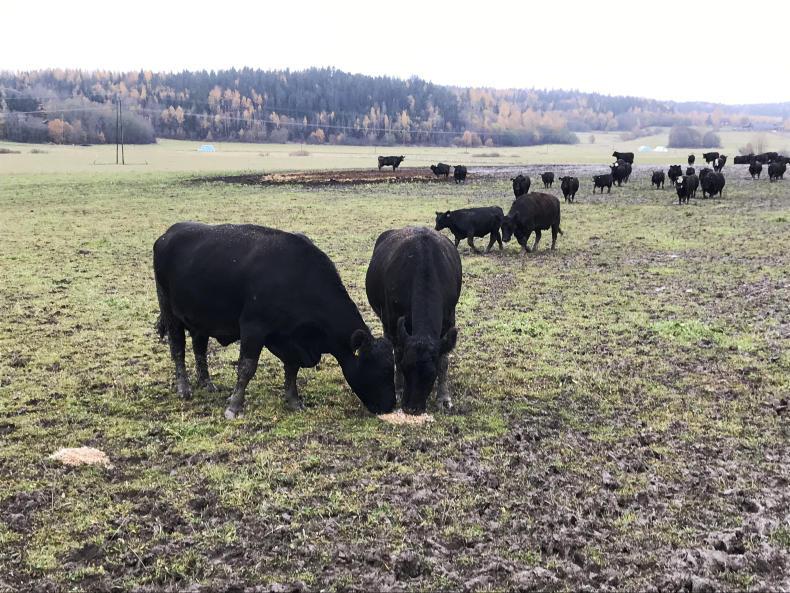
Some of Rehnberg's 350 Angus cattle.
For Finnish farmers, October is a busy month preparing for the harsh winter that will arrive in November and run deep into March. Temperatures will drop to -30°C when the snows arrive and daylight will be almost non-existent in December and January.
After deducting processing and packaging costs, Rehnberg is getting a net price of around €12.50/kg for his animals
For organic beef and tillage farmer Gustav Rehnberg, the arrival of winter means he will need to bring his cattle indoors very soon. Finnish law states that all animals must be housed indoors for the winter by 31 October but Rehnberg thinks he will house his 350 head of pure-bred Angus cattle ahead of that date because the weather has been quite wet this week and fields are getting messy.
Generation
Known as Gårdskulla, Rehnberg’s 600ha farm has been in his family since the 1840s. He is the fifth generation of his family to run the farm, which is a mixture of tillage (150ha) and grass (400ha) for his Angus cattle. An additional 50ha of the farm is given over to “green zones”, which are environmental strips or areas of the farm.
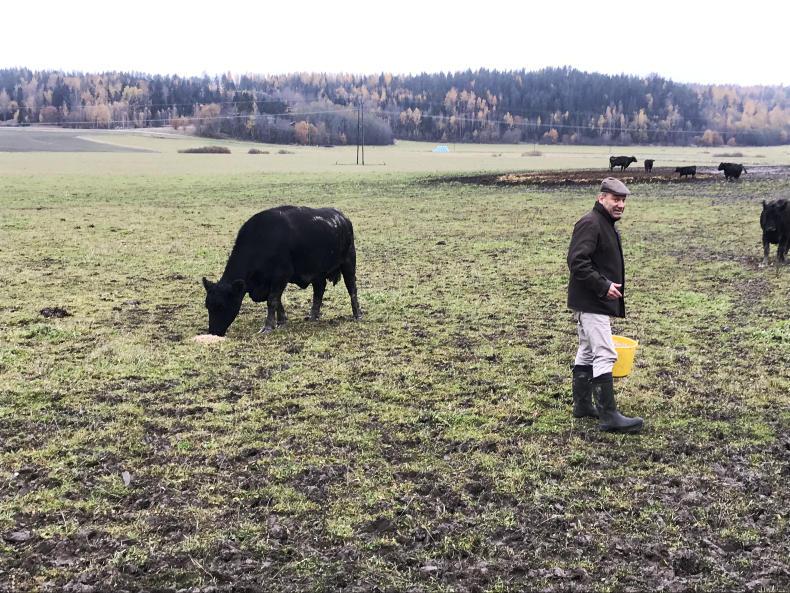
Rehnberg out in the fields.
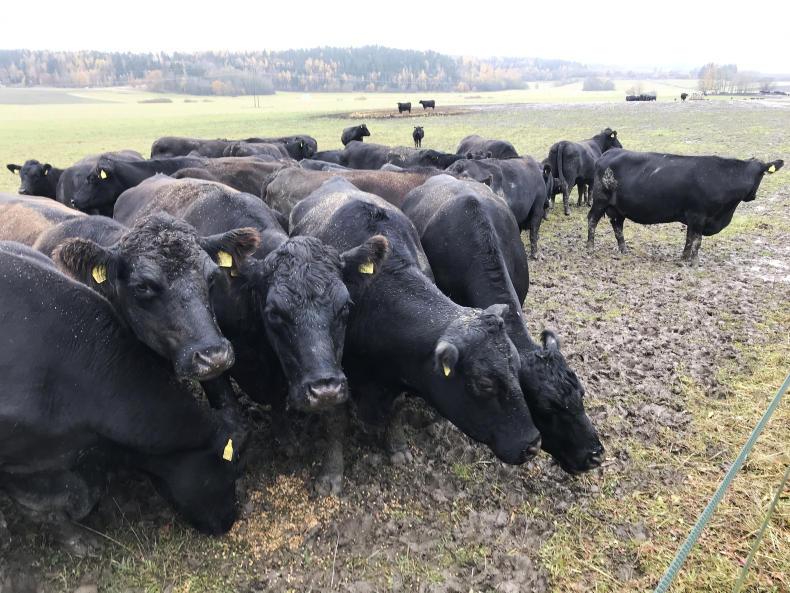

It has been quite wet this week.
The typical grass variety used in Finland is timothy and it is often mixed with red clover, fescue and lucerne.
While it has its challenges, the extremely cold winter weather in Finland does bring advantages such as very low incidence of disease and pests. Salmonella is non-existent in Finland and BSE is also not an issue.
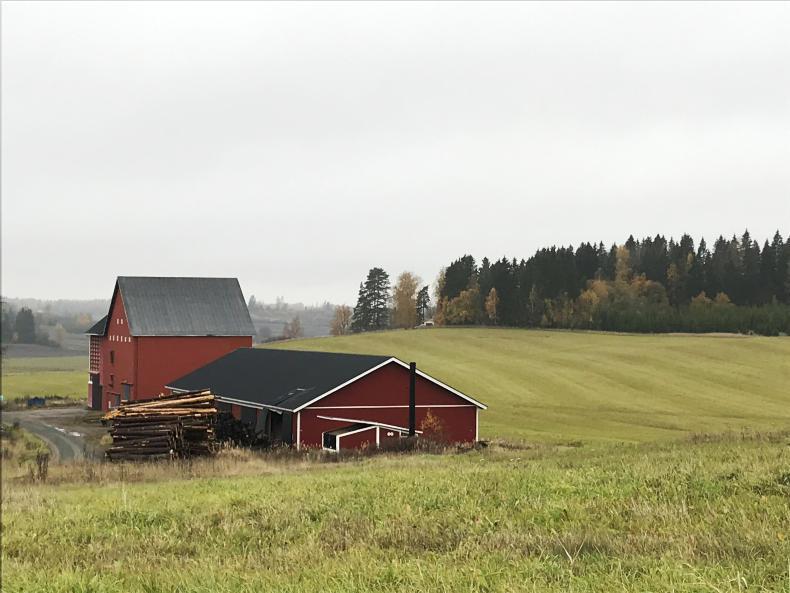
Modern cattle housing on the Rehnberg farm.
As they’re brought inside for the winter, Rehnberg will treat his cattle for lice and his local vet will check if the 130 cows are in-calf. A 95% in-calf rate is typical for this herd, with any empty cows sold for slaughter.
Rehnberg says he doesn’t use AI on the herd and instead splits the cows into four groups and runs a bull with each.
He prefers to spread out his calving season over four months from February to May to avoid the intense workload of block calving.
Grazing season
Once calving is over, the cattle will be allowed to return to grass in May where they will remain until October.
Bulls are slaughtered at 24 months of age and a carcase weight of 400kg. Heifers are sold live off the farm. An in-calf heifer will fetch €1,300, while a six-month-old heifer calf will make €600 to €700, says Rehnberg.
Right now, the farmgate beef price in Finland is a very lowly €2.50/kg. This is because the vast majority of beef processed in Finland, over 80%, is from cull cows and bull calves from the dairy herd.
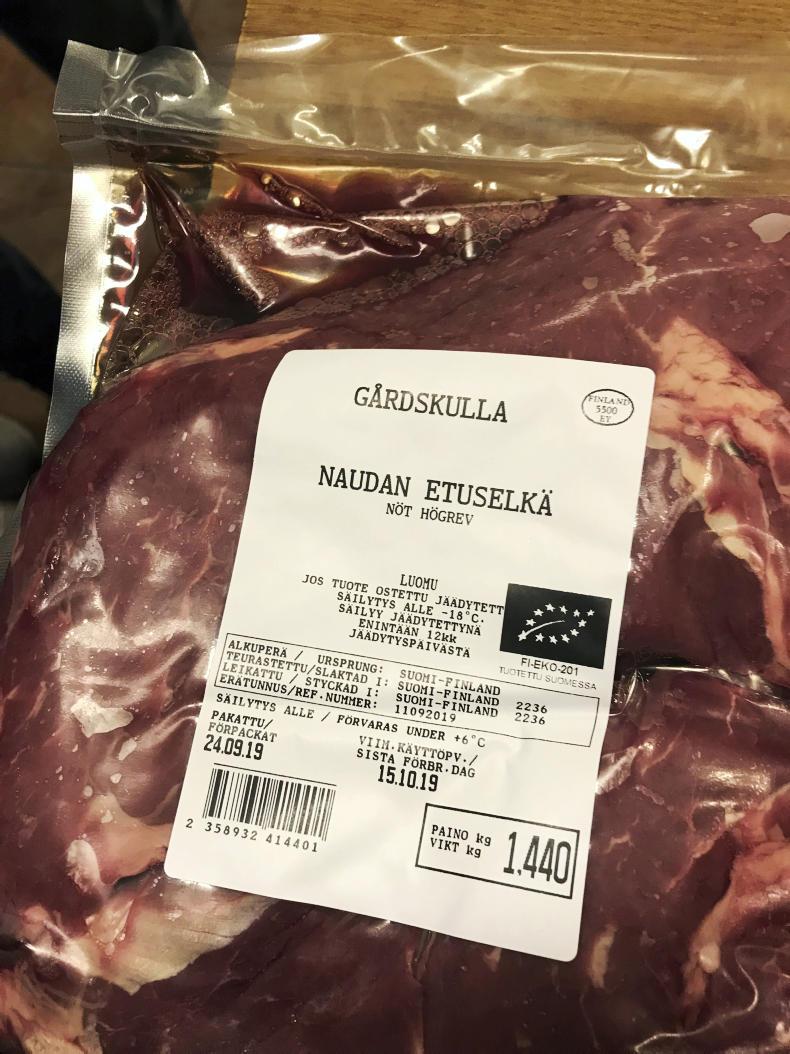
Finnish beef farmer Gustav Rehnberg sells his organic beef direct to consumers for a net price of €12.50/kg
Instead of accepting this weak market price, Rehnberg sells his organic beef direct to Finnish consumers, retailers and restaurants. After deducting processing and packaging costs, Rehnberg is getting a net price of around €12.50/kg for his animals.
During the summer, Rehnberg will make two to three cuts of baled silage on the farm, which he collects and wraps with his McHale baler. He says he used to make some hay but adds that trying to save hay is very risky in Finland as weather is quite unpredictable.
Diversification
Aside from organic beef cattle and selling direct to consumers, Rehnberg also grows 150ha of crops, including spring rye, spring oats and spring beans. The average yield of all of these crops is just 2t/ha to 3t/ha owing to the very short but intense growing season in Finland, which lasts just 120 days from May to August.
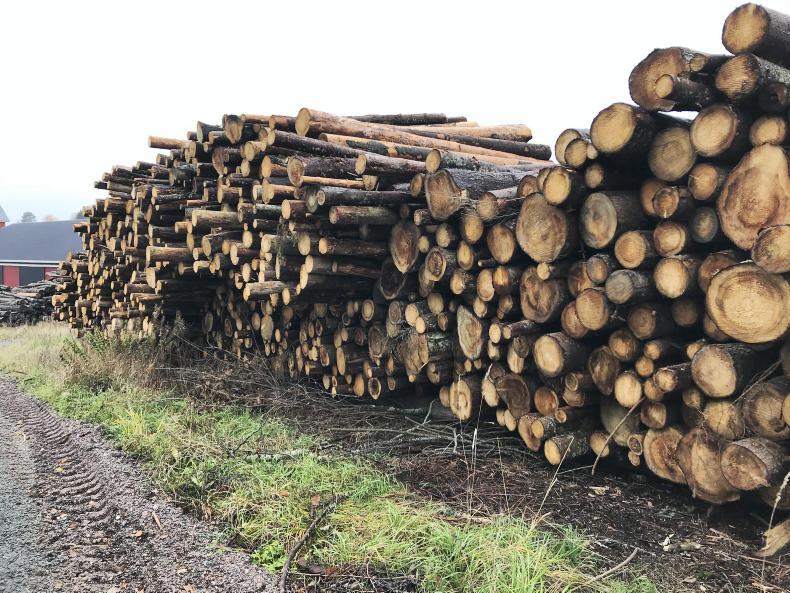
Rehnberg also has 1,500ha of forestry on his farm
Rehnberg sells his beans and oats directly to nearby dairy farmers, who use it as animal feed, while he sells his organic rye to a number of bakeries that use it to make ryebread - a popular type of bread in Finland.
As it is for almost every farmer in Finland, forestry is an important income source for Rehnberg. He has 1,500ha of managed spruce, birch and pine trees.
Every year, Rehnberg harvests around 5000m3 (cubic metres) of timber from his forest. With timber prices ranging from €25/m3 to €50/m3, this will mean an additional income of €125,000 to €250,000 per annum for the farm. However, this income must also cover thinning, harvesting and other maintenance costs for the forest.
Agri-tourism
Additionally, Gårdskulla has also been developed for agri-tourism. The farm now has a restaurant, farm shop, meeting rooms, lakeside sauna and even holds an annual Christmas tree safari.
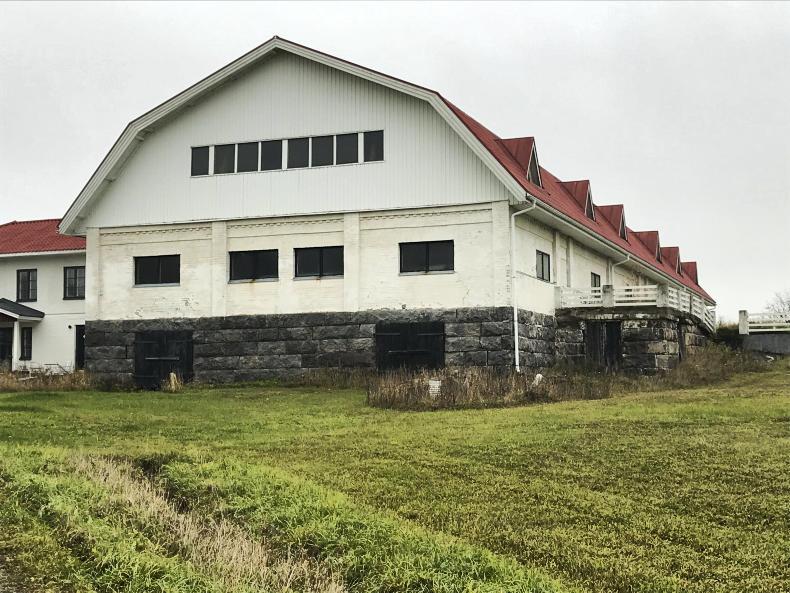
An old cow barn on the Rehnberg farm.
However, the real attraction at Gårdskulla is the tractor museum. Rehnberg’s father was an avid collector of tractors and assembled over 120 vintage models, comprising 45 different makes from all over the world. These include John Deere, Ford, New Holland, Deutz, Case, Massey Ferguson, Renault, David Brown, Nuffield, Valmet, Fiat, McCormick, Fahr, Allis Chalmers and Bolinder Munktell.
One of the oldest tractors in the collection, a Lanz Bulldog built in Germany in 1942, is valued at more than €50,000 today.
Read more
You can have your eggs in a couple of baskets – suckler farmer on forestry
EU beef price slump continues as Ireland drops below average
In Finland, the seasons change very quickly. Right now, autumn is in full show with the leaves of the native birch trees turning a bright shade of amber. Some have already fallen to the ground but most are still on the branches. In another two weeks the leaves will be gone from the trees altogether and the temperatures will begin to drop sharply.

Some of Rehnberg's 350 Angus cattle.
For Finnish farmers, October is a busy month preparing for the harsh winter that will arrive in November and run deep into March. Temperatures will drop to -30°C when the snows arrive and daylight will be almost non-existent in December and January.
After deducting processing and packaging costs, Rehnberg is getting a net price of around €12.50/kg for his animals
For organic beef and tillage farmer Gustav Rehnberg, the arrival of winter means he will need to bring his cattle indoors very soon. Finnish law states that all animals must be housed indoors for the winter by 31 October but Rehnberg thinks he will house his 350 head of pure-bred Angus cattle ahead of that date because the weather has been quite wet this week and fields are getting messy.
Generation
Known as Gårdskulla, Rehnberg’s 600ha farm has been in his family since the 1840s. He is the fifth generation of his family to run the farm, which is a mixture of tillage (150ha) and grass (400ha) for his Angus cattle. An additional 50ha of the farm is given over to “green zones”, which are environmental strips or areas of the farm.

Rehnberg out in the fields.


It has been quite wet this week.
The typical grass variety used in Finland is timothy and it is often mixed with red clover, fescue and lucerne.
While it has its challenges, the extremely cold winter weather in Finland does bring advantages such as very low incidence of disease and pests. Salmonella is non-existent in Finland and BSE is also not an issue.

Modern cattle housing on the Rehnberg farm.
As they’re brought inside for the winter, Rehnberg will treat his cattle for lice and his local vet will check if the 130 cows are in-calf. A 95% in-calf rate is typical for this herd, with any empty cows sold for slaughter.
Rehnberg says he doesn’t use AI on the herd and instead splits the cows into four groups and runs a bull with each.
He prefers to spread out his calving season over four months from February to May to avoid the intense workload of block calving.
Grazing season
Once calving is over, the cattle will be allowed to return to grass in May where they will remain until October.
Bulls are slaughtered at 24 months of age and a carcase weight of 400kg. Heifers are sold live off the farm. An in-calf heifer will fetch €1,300, while a six-month-old heifer calf will make €600 to €700, says Rehnberg.
Right now, the farmgate beef price in Finland is a very lowly €2.50/kg. This is because the vast majority of beef processed in Finland, over 80%, is from cull cows and bull calves from the dairy herd.

Finnish beef farmer Gustav Rehnberg sells his organic beef direct to consumers for a net price of €12.50/kg
Instead of accepting this weak market price, Rehnberg sells his organic beef direct to Finnish consumers, retailers and restaurants. After deducting processing and packaging costs, Rehnberg is getting a net price of around €12.50/kg for his animals.
During the summer, Rehnberg will make two to three cuts of baled silage on the farm, which he collects and wraps with his McHale baler. He says he used to make some hay but adds that trying to save hay is very risky in Finland as weather is quite unpredictable.
Diversification
Aside from organic beef cattle and selling direct to consumers, Rehnberg also grows 150ha of crops, including spring rye, spring oats and spring beans. The average yield of all of these crops is just 2t/ha to 3t/ha owing to the very short but intense growing season in Finland, which lasts just 120 days from May to August.

Rehnberg also has 1,500ha of forestry on his farm
Rehnberg sells his beans and oats directly to nearby dairy farmers, who use it as animal feed, while he sells his organic rye to a number of bakeries that use it to make ryebread - a popular type of bread in Finland.
As it is for almost every farmer in Finland, forestry is an important income source for Rehnberg. He has 1,500ha of managed spruce, birch and pine trees.
Every year, Rehnberg harvests around 5000m3 (cubic metres) of timber from his forest. With timber prices ranging from €25/m3 to €50/m3, this will mean an additional income of €125,000 to €250,000 per annum for the farm. However, this income must also cover thinning, harvesting and other maintenance costs for the forest.
Agri-tourism
Additionally, Gårdskulla has also been developed for agri-tourism. The farm now has a restaurant, farm shop, meeting rooms, lakeside sauna and even holds an annual Christmas tree safari.

An old cow barn on the Rehnberg farm.
However, the real attraction at Gårdskulla is the tractor museum. Rehnberg’s father was an avid collector of tractors and assembled over 120 vintage models, comprising 45 different makes from all over the world. These include John Deere, Ford, New Holland, Deutz, Case, Massey Ferguson, Renault, David Brown, Nuffield, Valmet, Fiat, McCormick, Fahr, Allis Chalmers and Bolinder Munktell.
One of the oldest tractors in the collection, a Lanz Bulldog built in Germany in 1942, is valued at more than €50,000 today.
Read more
You can have your eggs in a couple of baskets – suckler farmer on forestry
EU beef price slump continues as Ireland drops below average









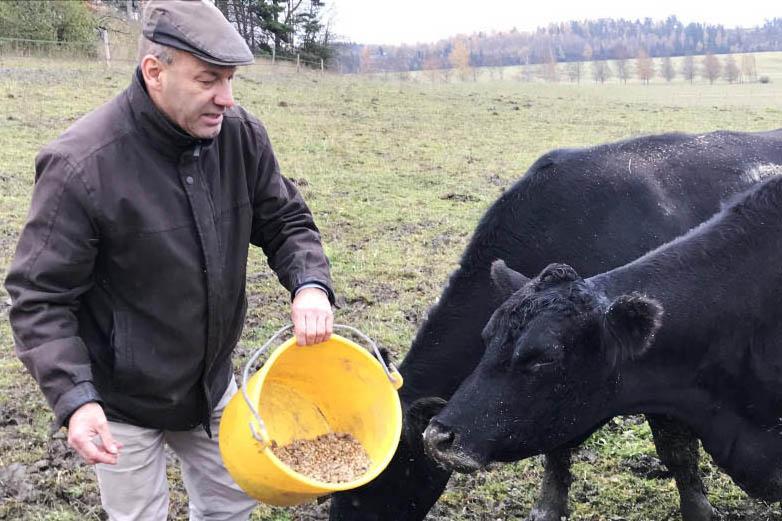




 This is a subscriber-only article
This is a subscriber-only article










SHARING OPTIONS: